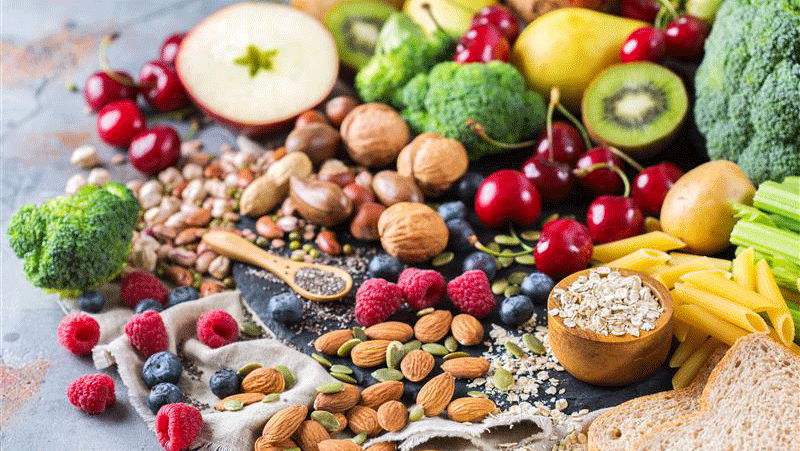
The Power of Fiber in Your Diet
Fiber—the unsung hero of our daily diet. While it doesn’t get as much limelight as proteins or vitamins, fiber plays a crucial role in maintaining our health. Found mainly in fruits, vegetables, whole grains, and legumes, dietary fiber is best known for its ability to prevent or relieve constipation. But fibers can also provide other health benefits such as helping to maintain a healthy weight and lowering your risk of diabetes, heart disease, and some types of cancer.
Types of Fiber
There are two types of fiber: soluble and insoluble.
- Soluble fiber dissolves in water to form a gel-like material. It can help lower blood cholesterol and glucose levels. Soluble fiber is found in oats, peas, beans, apples, citrus fruits, carrots, barley, and psyllium.
- Insoluble fiber promotes the movement of material through your digestive system and increases stool bulk, so it can be of benefit to those who struggle with constipation or irregular stools. Whole-wheat flour, wheat bran, nuts, beans, and vegetables, such as cauliflower, green beans, and potatoes, are good sources of insoluble fiber.
Health Benefits
A diet rich in fiber can help you:
- Control Weight. High-fiber foods tend to be more filling than low-fiber foods, so you’re likely to eat less and stay satisfied longer. And high-fiber foods tend to take longer to eat and to be less “energy-dense,” which means they have fewer calories for the same volume of food.
- Lower Risk of Heart Disease. Research has shown that people who eat more fiber are less likely to have heart disease.
- Improve Digestive Health. A high-fiber diet may lower your risk of developing hemorrhoids and small pouches in your colon (diverticular disease).
- Regulate Blood Sugar Levels. For people with diabetes, fiber can slow the absorption of sugar and help improve blood sugar levels.
How Much Fiber Do You Need?
The amount of fiber you need depends on your age and gender. Here are the recommendations:
- Men aged 50 or younger: 38 grams per day.
- Women aged 50 or younger: 25 grams per day.
- Men aged 51 or older: 30 grams per day.
- Women aged 51 or older: 21 grams per day.
Tips for Adding Fiber
Here are some tips to help you increase the fiber in your diet:
- Start Slow. If you’re not used to eating a lot of fiber, add it to your diet slowly to prevent gastrointestinal upset.
- Read Labels. Look for breads that list whole wheat, whole-wheat flour, or another whole grain as the first ingredient.
- Snack Smart. Fresh fruits, raw vegetables, low-fat popcorn, and whole-grain crackers are all good choices.
- Substitute. Use whole-grain flour in place of half or all of the white flour when baking.
Incorporating fiber into your diet is a simple and effective way to improve your health. So next time you’re at the grocery store, reach for the whole grains, legumes, and a colorful variety of fruits and vegetables. Your body will thank you!
Sources:
Mayo Clinic – Nutrition and Healthy Eating
Healthline – Fiber Can Help You Lose Weight
Start – Maintaining a Healthy Heart